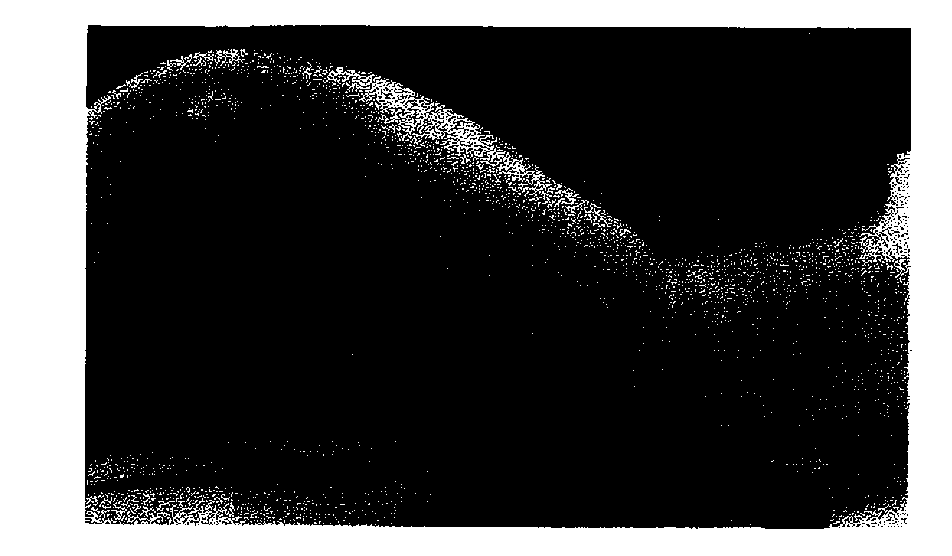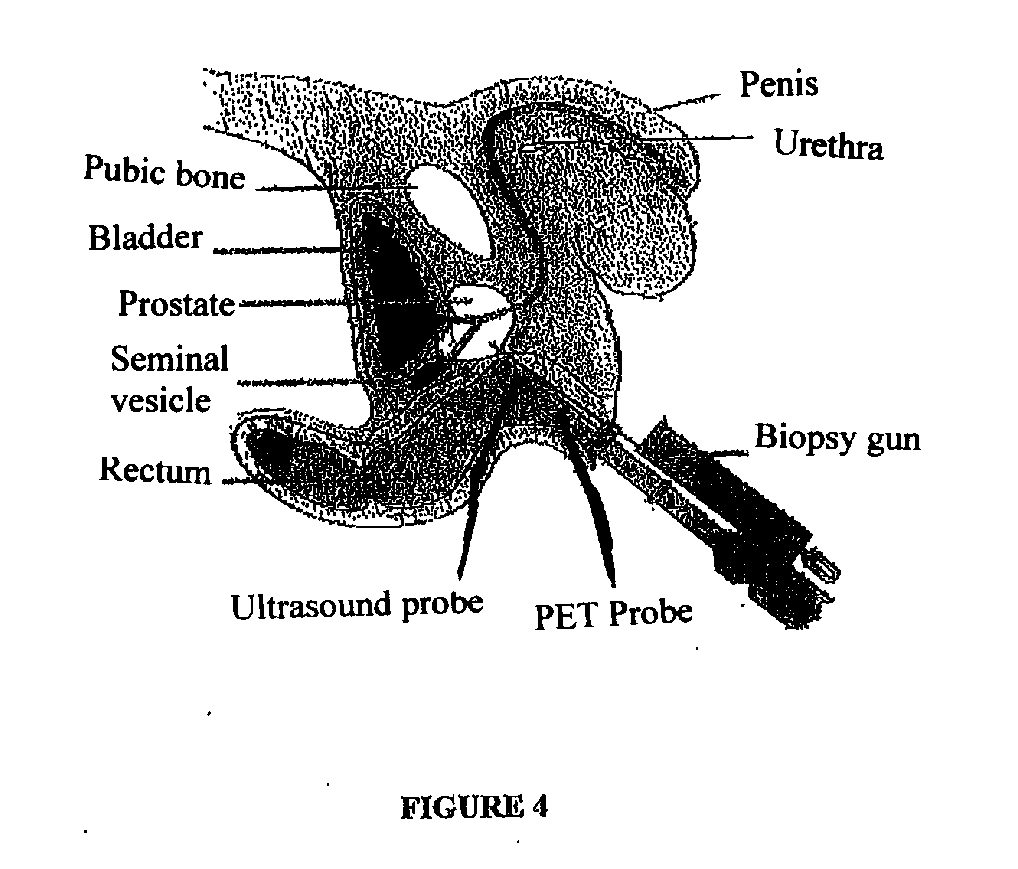Endorectal Prostate Probe With Combined PET and US Modalities
a prostate probe and combined technology, applied in the field of endorectal probes, can solve the problems of high false negative diagnosis with many missed cancers, inaccurate assessment today is not available with conventional imaging techniques, and the results of biopsy may be negativ
- Summary
- Abstract
- Description
- Claims
- Application Information
AI Technical Summary
Benefits of technology
Problems solved by technology
Method used
Image
Examples
Embodiment Construction
[0057]The positron emission tomography and ultrasound dual modality probe and dual modality imaging system of this invention provide significant improvement over existing devices and methods to obtain evaluations of a target organ of a patient, a biopsy of the target organ, and to perform localized surgery of the target organ. The target organ may be, for example, but not limited to the prostate gland of a male patient, a gynecological anatomical structure of a female patient (vagina, cervix, uterus, etc.), or the rectum of a patient, or other anatomical structure of a patient wherein an endoscopic probe is utilized.
[0058]In a preferred embodiment of this invention, the probe and imaging system and method of this invention is useful to guide prostate biopsy / surgery with high resolution combined dual-modality (hybrid) PET (Positron Emission Tomography) probe / US (Ultrasound) probe imaging in one compact endorectal device. The 3D images from the two modalities are naturally fused becau...
PUM
 Login to View More
Login to View More Abstract
Description
Claims
Application Information
 Login to View More
Login to View More - R&D
- Intellectual Property
- Life Sciences
- Materials
- Tech Scout
- Unparalleled Data Quality
- Higher Quality Content
- 60% Fewer Hallucinations
Browse by: Latest US Patents, China's latest patents, Technical Efficacy Thesaurus, Application Domain, Technology Topic, Popular Technical Reports.
© 2025 PatSnap. All rights reserved.Legal|Privacy policy|Modern Slavery Act Transparency Statement|Sitemap|About US| Contact US: help@patsnap.com



